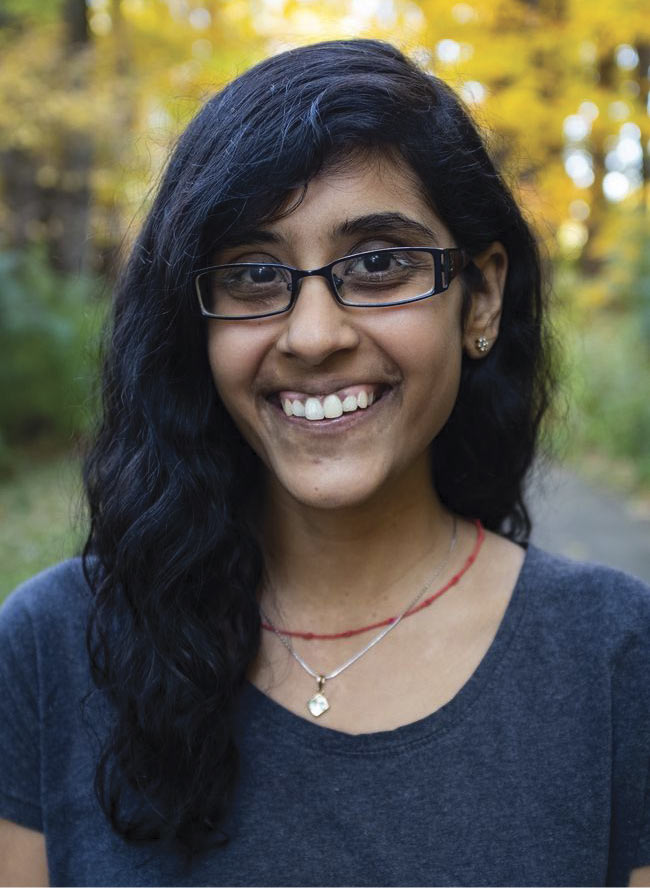Deesha Shah has been awarded the 2020 Teddi C. Laurin Scholarship for her contributions to the field of optics and photonics.
 Shah is a doctoral student in the School of Electrical and Computer Engineering at Purdue University, co-supervised
by professors Vladimir Shalaev and
Alexandra Boltasseva. Her research includes the development of plasmonic thin films, particularly transition metal nitrides, and noble metals, with a specific focus on the optical properties of ultrathin metallic films and their uses in tunable nanophotonic devices. She has received several awards, including the Ross
Fellowship and the Society of Vacuum Coaters Student Award.
Shah is a doctoral student in the School of Electrical and Computer Engineering at Purdue University, co-supervised
by professors Vladimir Shalaev and
Alexandra Boltasseva. Her research includes the development of plasmonic thin films, particularly transition metal nitrides, and noble metals, with a specific focus on the optical properties of ultrathin metallic films and their uses in tunable nanophotonic devices. She has received several awards, including the Ross
Fellowship and the Society of Vacuum Coaters Student Award.

Deesha Shah, winner of the 2020 Teddi C. Laurin Scholarship, is pursuing a doctorate in plasmonic thin films at Purdue University. Courtesy of SPIE.
Photonics Media partners with SPIE
to fund the Teddi C. Laurin Scholarship to raise awareness of optics and photonics and to foster growth and success in the photonics industry by supporting students involved in photonics. The scholarship
is in memory of Teddi C. Laurin, founder of Laurin Publishing and Photonics Media.
“We are proud to congratulate the 2020 Teddi C. Laurin Scholarship winner,
Deesha Shah,” said Tom Laurin, president of Photonics Media. “This award honors the vision of my mother, Teddi Laurin, whose dream was to see the photonics industry thrive and expand. We wish Deesha the best of luck as she pursues her studies in plasmonics.”
As the treasurer for SPIE’s student chapter at Purdue, Shah helped organize the 2018 SPIE/OSA callout and the 2019 SPIE Women in Optics panel. She said she plans to use the scholarship in part to attend SPIE’s Photonics West 2021 and Optics and Photonics 2021, and to cover university fees.
‘I was intrigued how optical properties could be enhanced by manipulating structure geometry.’
“I attended both [conferences] in 2019, and at both I had the opportunity to meet
and talk with several important professors in the field of plasmonics,” Shah said.
Her interest in plasmonics, she said, originated with a research project in her undergraduate studies for which she was looking into the physics behind metamaterials.
“I was intrigued how optical properties could be enhanced by manipulating structure geometry,” Shah said. “My newfound interest led me to an internship at Los Alamos National Laboratory (LANL), where I designed a metamaterial-based chemical sensor for explosive materials.
My experience at LANL fueled my
motivation to pursue a research career
in photonics.”